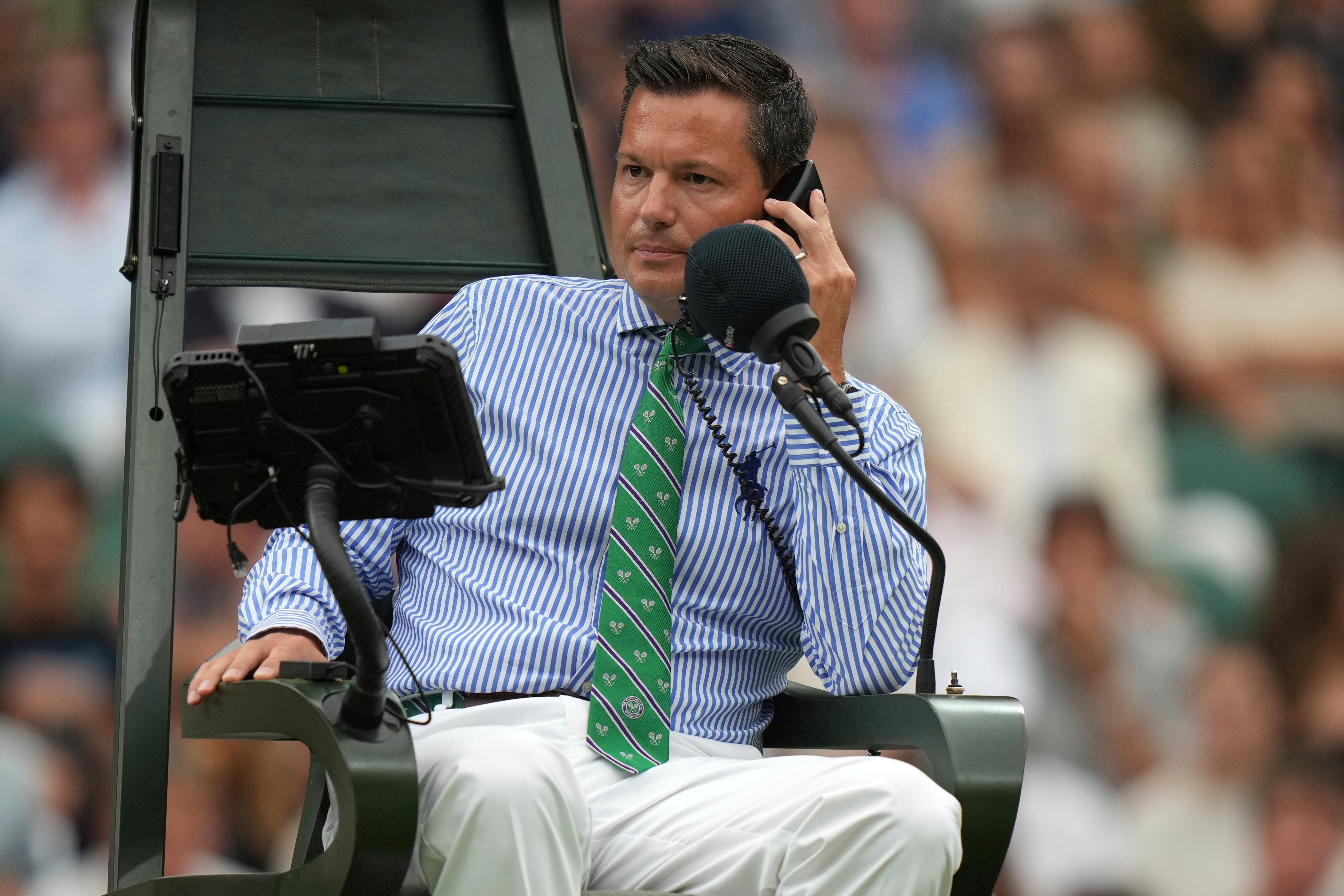It’s been 44 years since electronic music innovators Kraftwerk released the mournful, melodic, moving masterpiece “Computer Love”. And if that seems like a strange place to start an article on Wimbledon, let’s not forget there’s currently no love for the computer line judge in SW19, a system replacing a craft that did work.
With that painfully tenuous intro out of the way: the implementation of electronic line calling (ELC) at this year’s Wimbledon, a technology already used elsewhere on the tour, was always going to be controversial. The Championships at the All England Club are a tournament steeped in tradition, positively drenched in it – from the customary white attire adorned by players, to the men’s and women’s title winners dancing at the Champions’ Ball, to revellers relaxing on Henman Hill and enjoying Pimm’s, strawberries and cream.
Similarly, there was always a charm in seeing a legion of line judges, dressed smartly in colours of cream and blue, march onto court before a match. Of course, there was the possibility of margin for error, yet you’d like to think there was always an understanding among fans when a line judge got a call wrong; even players, caught up in the emotions of trying to win tennis’s most prestigious tournament, were largely forgiving.
And the introduction of Hawk-Eye in 2007, giving players the ability to challenge calls, marked a sensible step into the present while retaining the tradition of employing real people on court to make the big calls.
For 147 years, human line judges were used, until it was announced that 2025 would represent a leap into a bold new era (which basically no one wanted to enter), with ELC replacing actual line judges.
One could argue, of course, that the stakes are so high at Wimbledon, both historically and monetarily, that relying on an electronic system might be the right call – no pun intended. However, that is based on the premise that the electronic system is more accurate than the human eye, a premise that has been challenged (again, no pun intended, honestly) this week.
British hopefuls Jack Draper and Emma Raducanu, now both eliminated in SW19, questioned the accuracy of ELC. Raducanu, after her loss to world No 1 Aryna Sabalenka on Friday, even said: “It’s kind of disappointing, the tournament here, that the calls can be so wrong.”
Yet the boiling point came on Sunday afternoon, when another Briton struck a shot well beyond the baseline, only for ELC to fail to call Sonay Kartal’s error. Her opponent, Anastasia Pavlyuchenkova, would have won the game if she had correctly been awarded the point, and she would have led 5-4 in the opening set.
What ensued was a bizarre scene. Umpire Nico Helwerth (from Germany, like Kraftwerk, ah?) was admittedly unable to use the video replay that fans at home could see, meaning he pulled out a corded telephone to discuss the matter with fellow officials, before informing the Centre Court crowd that the point had to be replayed. Pavlyuchenkova remained remarkably calm initially, even after losing the replayed point. But when she lost the game itself, she used the change of ends to vent.
“Because she is local, they can say whatever,” the Russian told Helworth, referring to Kartal. “You took the game away from me.” When Helworth seemed to lay blame at the feet of the system, Pavlyuchenkova retorted: “They stole the game from me, they stole it.”

Ultimately, Pavlyuchenkova broke Kartal’s serve as the latter failed to close out the set, and the Russian went on to earn a straight-sets win. Yet imagine she had lost the first set, especially in the game after ELC’s error. Imagine she had lost the match.
Again, some observers might claim this could have occurred in years gone by, with a human line judge making the mistake. Yet at least players had the chance to challenge these calls, and not lose one of their allotted challenges if they were successful in appealing the call.
Perhaps we are all sceptical right now, in a world in which new technology is seemingly causing as many problems as solutions. Perhaps there’s something a bit too Terminator about the rise of these machines. Indeed, having to specify “human” line judges multiple times is a jarring move for a Monday morning.
Ironically, Wimbledon’s apology included a mention of “human error”. “The live ELC system relies on the Hawk-Eye operators, the review official and the technology to work in harmony. “This did not happen,” said a spokesperson. “In this instance, there was a human error and, as a consequence, we have fully reviewed our processes and made the appropriate changes. We continue to have full confidence in the accuracy of the ball-tracking technology.”

So, a human is still to blame for a mistake that could have been oh so costly? Or would the removal of a seemingly convoluted electronic system have at least cut out the electronic middleman, simplifying the whole process?
You could argue all day, fizzing a fuzzy, verbal tennis ball over the net back and forth. Or you could admit that there was never really anything wrong with how things used to be.







